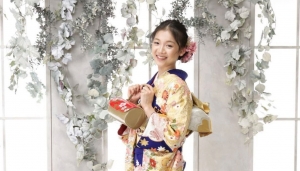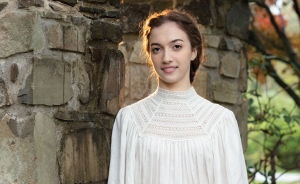Chinese Folk Dance: The Rice Sprout Song
The Yangge folk dance is not quite what you would expect from a typical male group dance. In classical Chinese dance, men are strong and vigorous, with a majestic air. But Yangge is all about being happy, even goofy, as farmers celebrate the season’s bountiful harvest.
And just like the differences between China’s different regions, the Chinese ethnic and folk dances are unique and nothing like the classical Chinese dance and its training that I’m used to.
There are various styles of Yangge, which literally translates as “rice sprout song.” Last year’s piece, Harvest Joy, was in a style called “Da Yangge,” or "The Big Yangge." This season we’re performing a piece titled Happiness in the Huai Valley. It is choreographed in a style “Hua Gu Deng,” which translates as “Flower Drum Lantern,” although in this dance there are no flowers. Or drums. Or lanterns.
Like other ethnic and folk dances, the dance movements originate from country daily life. Even the names of the movements are true to life, such as the "rolling up sleeves step," which is essentially rolling up your sleeves while stepping. There are many other funky names—my favorite is “lion looking backwards" (this one, I hope, was not a daily part of country life).
Though we had danced Yangge in the past, Hua Gu Deng is a very different style. It’s full of sudden movements and awkwardly angled poses, with a hint of silliness.
We spent a lot of time trying to get everyone’s head and body tilted in exactly the same direction. We also had to forget all the rules of classical Chinese dance—Hua Gu Deng had its own rules and own distinct flavor. It was like learning to dance all over again.
Of course, practice makes perfect, and we eventually got the hang of it. But then I began to wonder whether the audience would understand and enjoy this dance. Now that we’ve toured for a month, I’m glad to say that my misgivings have been put to rest. People seem to like it a lot, and even mention the dance as one of their favorites.
“I just especially loved when they do the leaping moves, it was fun to see those,” one Houston audience member said about the piece in a review I read in The Epoch Times.
I figure that what the audience really enjoys is the diversity that Chinese dance has to offer. Men can be strong and courageous, like in Recalling the Great Qin or the Tang Court Drummers, and they can also be playful and carefree, like in the Little Mischievous Monks. They can be proud Mongolians on galloping horses, or pious Tibetans amidst snow-capped mountains. Or they can be the happy-go-lucky farmers of the east.

Gary Liu
Dancer
28 januari 2012






